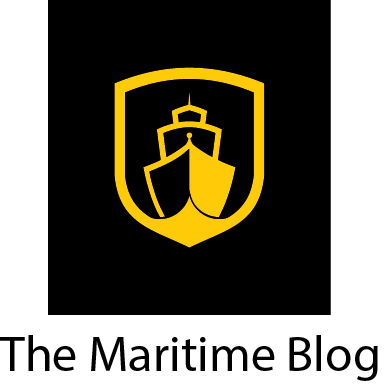search the site
The potential for Iranian disruption of maritime transport /ANALYSIS
THE WAR IN MIDDLE EAST
The potential for Iranian disruption of maritime transport /ANALYSIS
Since Hamas launched their attack on 7 October 2023, Israel and the rest of the world has been concerned as to the possibility of Hezbollah becoming actively involved in the conflict: this concern is legitimate for two distinct reasonsDI PIETRO ZUCCHELLI*
20 Ottobre 2023Aggiornato alle 15:504 minuti di lettura

The Meditelegraph 1 December 2023
Genoa – Since Hamas launched their attack on 7 October 2023, Israel and the rest of the world has been concerned as to the possibility of Hezbollah becoming actively involved in the conflict.
This concern is legitimate for two distinct reasons: first it would create a double front distracting Israel from operations against Hamas and, secondly, Iran would be perceived as having actively entered the conflict.
The latter can be explained quite simply: the Lebanese Shia organisation is funded and supported by Iran. Every decision about the Group’s direct involvement in the conflict would be taken in Tehran. Were Iran to approve or order Hezbollah to attack Israel, the decision would trigger a chain reaction that would lead to an open conflict between Iran and Israel with regional, and potentially global, consequences.
I interviewed Martin Kelly, Head of Advisory at EOS Risk Group, to identify some potential consequences resulting from Iran’s involvement in this conflict and to understand which are the geographic areas that could be implicated.
If the scenario of a direct conflict between Israel and Iran should materialise, Kelly has no doubt that the Strait of Hormuz will be one of the first areas to be involved. Given the fact that Israel and Iran have long been engaged in a shadow war in this area, with Israel attacking Iranian ships transporting oil to Syria and Iran conducting, for example, drone strikes against Israel-affiliated vessels, Kelly has no doubt that in the case of a direct conflict the Strait of Hormuz risks becoming extremely dangerous for international shipping.
According to Kelly, the worst case scenario is the Iranian closure of the Strait of Hormuz by using the Iranian anti-access and area denial (A2AD) system made up of coastal defence cruise missile systems, surface to air missile systems, and Islamic Revolutionary Guard Corps (IRGC) fast attack craft and mines.
This scenario would have an immediate impact on global oil prices and would almost certainly trigger a response from the United States and its allies to facilitate the free flow of trade, specifically oil & gas, from the Gulf region. However, Enrico Vergani (Partner and Head of the Shipping, Transport & Logistics Focus Team at BonelliErede) argues that this worst case scenario is very unlikely.
Despite there not being any specific international law instrument covering the Strait of Hormuz (unlike the Bosporus Strait which is regulated by the Montreux Convention), the United Nations Convention on the law of the Sea (UNCLOS) grants 12 nautical miles of territorial sea to all States rendering the Strait of Hormuz a shared waterway between Iran and Oman as both control half of the strait through their territorial seas.
In particular, the article 44 of UNCLOS specifies that although a State can regulate its territorial sea, laws shall not have the practical effect to hamper the right of passage. In the light of this Convention, Vergani believes that a unilateral blockade of the Strait by Iran would constitute an invasion of Oman’s territorial waters, a scenario that, according to international law, could be interpreted as an act of war.
Were this scenario to materialise, Iran would directly face an international coalition whose goal is to reopen the Strait of Hormuz. In the case of Iran entering the conflict in support of Hamas, it is more likely to expect that Tehran will carry out disturbance actions to seize, or to attack with limpet mines, vessels transiting Iran’s territorial waters to demonstrate their regional power.
Furthermore, this scenario would in all probability lead to Iran using cyber-attacks to disturb the GPS used by vessels in the area. Given the high impact of these actions and the low risk level that hackers face, it appears obvious that similar attacks could represent one of the best choices in Iranian hands to disturb and disrupt maritime transport in the Strait of Hormuz. To better understand this risk I interviewed Malcom Warr (former Royal Navy Commander and Maritime Advisor at the IASME Consortium) to ask him which are the principal types of cyber-attacks that could disrupt GPS and to understand what kind of actors could carry out these attacks. GPS is a part of the suite of technologies that use Positioning Timing and Navigation (PNT) to accurately determine the position of the user.
Since its first use in maritime transportation, GPS has significantly enhanced safety at sea, allowing vessels to determine their position, track their routes and avoid natural hazards or other vessels. GPS also enables efficient voyage planning, optimising routes for fuel consumption and minimising travel times.
For these reasons, GPS’s role is vital for maritime transportation and its disruption could lead to severe consequences for maritime transportation. Disruption to GPS can be caused in multiple ways, but Warr identified jamming and spoofing as the most common attacks used by hackers in these cases.
Jamming can involve overriding very weak radio signals to inhibit their original functions, for example to stop drones flying in certain areas or make map apps unreliable. On the other hand, spoofing attacks allow a person (or a program) to identify themselves as another, creating false signals, to gain an advantage.
Spoofing attacks can easily send fake information on positioning, timing, and navigation of vessels, creating several problems to commercial navigation. Given the effects that these cyber-attacks could have on GPS and maritime transportation, and partially because many crews are no longer trained on traditional navigation systems, jamming and spoofing attacks can easily pose a serious threat to maritime transportation and have a severe effect on economies and supply chains were vessels to collide or mistake their position for another.
If these attacks involve very sensitive areas for maritime transportation (such as in the case of the Strait of Hormuz), the global economy could be seriously affected. Given its importance, GPS is one of the most sensitive targets for any actor wishing to disrupt maritime traffic and destabilise local/global economies or supply chains.
At this point there is one crucial question: what category of actor could carry out cyber-attacks threatening maritime transport and, potentially, the global economy? Warr recognizes that, historically, many emerging or advanced technologies were only available to nation-state militaries, national labs, academic research or industry groups, and a limited number of non-state actors.
Currently, new technologies, which are widely available and cheap, have dramatically expanded the numbers of non-state actors that could use these tools to disrupt GPS driven systems on land and at sea.
In addition, satellite navigation signals from space are precariously weak and can easily be blocked, damaged, or compromised by a growing array of threats including solar activity, man-made interference, malicious faking of GPS signals, and the manipulation of position and timing information.
From interviewing Kelly, Warr and Vergani, we can assume that in the event of Iran deciding to become more active in its operations against Israel, the Strait of Hormuz would become one of the main battlegrounds between these two Countries. The Islamic Republic would decide to interfere with the well-functioning of the maritime traffic that, in a worst case scenario, could lead to a full closure of the Hormuz Strait. However, this scenario appears very unlikely for the high consequences arising from violation of Oman’s territorial waters by Iran. The most likely scenario is that Iran implements a series of disruptive actions aimed at hindering maritime transport through the Strait. In this scenario, GPS would result as being one of the most sensitive targets to Iranian attacks and this possibility raises a series of considerations.
Firstly, this scenario seems to be very plausible given the low costs of these kinds of attacks and the high consequences that a disruption of GPS could have on global/local economies. Secondly, the difficulty in identifying the nature of the cyber-aggressors (State aligned or private group) would allow Iran to adopt a strategy of plausible deniability thus rendering the implementation of any eventual new sanctions far more difficult.
*Analyst MENA


















